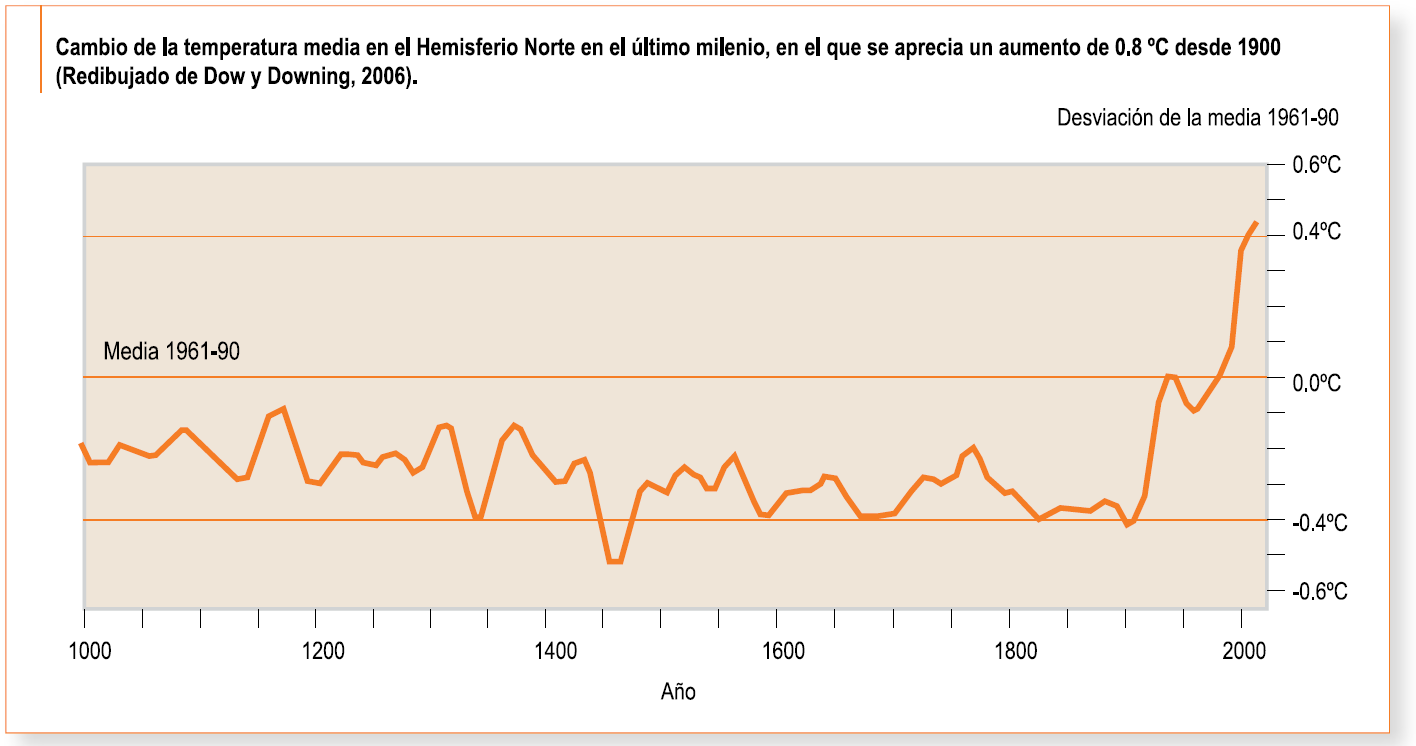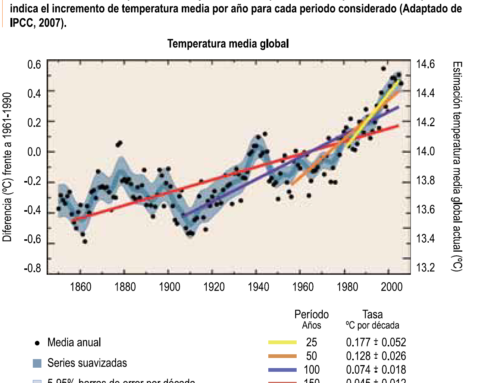Climate changes over the last 2000 years can be explained by the influence of natural factors that regulate the climate. In contrast, the warming of recent decades cannot be explained by these natural factors alone, but can only be explained as a result of human activities.
Sobre la Autora
Alicia Polidura Pérez
Bióloga Marina
Over the last millennium, the average temperature in the Northern Hemisphere has oscillated with consecutive warming and cooling of small magnitude. But it is from the second Industrial Revolution onwards that the average temperature has experienced an accelerated increase of up to 0.4°C every 50 years, with the second half of the 1990s seeing the largest increase, probably the largest in the last 2000 years.

The 11th century began with a relatively warm period known as the Medieval Climate Optimum. But from the early 14th century to the mid-19th century a cooling took place, the period known as the Little Ice Age. This period is characterised by the expansion of glaciers in mountain areas of Europe. It apparently did not affect the Southern Hemisphere.
The cooling that took place between 1400-1900 seriously affected European populations. The advancing glaciers took their toll on populations in the Alps of Switzerland and Austria and in the mountains of Norway, destroying farms and villages. With colder winters and a shorter growing season, grape and grain crops stopped growing in northern Europe where they had grown satisfactorily during the Medieval Climate Optimum, causing famine and abandonment of settlements.
Lakes, rivers and harbours across northern Europe also froze for several winters.



Leave A Comment